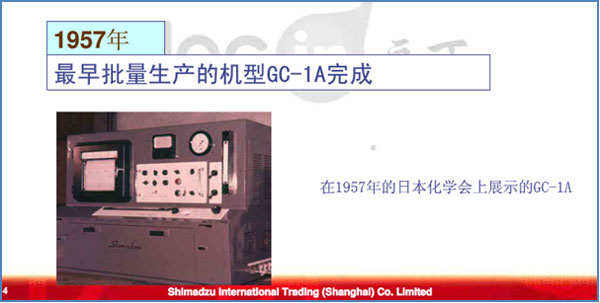Since the first practical gas-liquid chromatography method was created in the world in 1952, in just a few decades, gas chromatographs have become the representatives of modern analytical testing instruments, and have formed academic materials with considerable knowledge of testing techniques. Since Shimadzu introduced the first mass-produced GC-1A gas chromatograph in 1957, it has always guided the trend of gas chromatography technology and continuously provided solutions based on gas chromatography technology for all walks of life. Here, I will introduce Shimadzu to provide gas chromatography chemical solutions. Natural gas analysis solutions Natural gas is a natural gas body with methane as the main component. It also contains nitrogen, carbon dioxide, saturated alkanes below C5, and a small amount or traces of hydrogen sulfide and hydrogen. It may sometimes contain a small amount of helium. Refinery gas analysis solution In the process of petroleum refining and catalysis, a large amount of gaseous hydrocarbons are produced. The main components are alkanes and olefins below C4, hydrogen, and a small amount of nitrogen, carbon dioxide and other gases. The alkanes and olefins in refinery gas pass through the gas fractionation device and become raw materials with high economic value for polyethylene, polypropylene and other chemical products or clean energy such as LPG. Therefore, refinery gas analysis is a very important chromatographic analysis in petrochemical projects. Gas analysis solutions Coal gas generally refers to gas containing combustible components produced by processing coal as a raw material. According to the processing method, the nature of gas can be divided into: water gas, semi-water gas, air gas (or generator gas), coke oven gas, blast furnace gas, etc. These gases have different calorific values ​​and their uses are different. Carbon monoxide and hydrogen in coal gas are important chemical raw materials and can be used to synthesize ammonia and methanol. The gas used as chemical raw material is called synthesis gas, and gas can also be made from natural gas, light oil and heavy oil. Gasoline analysis solutions The production of unleaded gasoline is to improve the environmental pollution of lead in vehicle emissions. Adding ethers, alcohols and other oxygenated compounds to gasoline can increase octane number and reduce volatility. However, the types and concentrations of oxygenated compounds are strictly regulated and should be adjusted to meet the quality requirements of commercial gasoline. ASTM D 4815 (SH / T 0663-2009) standard method is used for gasoline production quality control, and can also be used to determine the content of oxygenated compounds or pollutants intentionally or additionally added in gasoline. In order to reduce the emission of toxic substances from motor vehicles and their damage to the atmospheric ozone layer, there are restrictions and regulations on the concentration of benzene and total aromatics in gasoline. In the production of gasoline, the content of benzene and total aromatics should be adjusted to meet the quality requirements of commercial gasoline. ASTM D 5580 (SH / T 0693-2009) is used to determine the content of benzene, toluene, ethylbenzene, xylene, aromatics above C9 and total aromatics in finished gasoline. ASTM D 3606 (SH / T 0713-2009) can also be used to determine the content of benzene and toluene in finished gasoline. Trace sulfide analysis solution There are sulfides in crude oil and natural gas, and the sulfide content varies with the location of mining. The presence of sulfides has a certain impact on petrochemical refining and product processing, and it will also bring many problems to production and technology. For the above reasons, many processes explicitly limit the concentration of sulfides in hydrocarbon products. Trace CO, CO2 analysis solution Trace CO and CO2 analysis are widely used in production control. In order to obtain accurate analysis results, different analysis schemes should be adopted for trace CO and CO2 in different substrates. In recent years, in the production process of ethylene and propylene, the requirements of the process on the control indexes of CO and CO2 have also become higher and higher, often involving ppb level detection. Other analytical solutions Stainless Steel Turkey Stock Pot,Stainless Steel Turkey Pot,Turkey Pot,Turkey Stock Pot Jiangmen Xinweijie Stainless Steel Products Co., Ltd. , https://www.xwjstockpots.com
According to the state of natural gas reserves, it can be divided into three types: structural natural gas, hydrated natural gas, coal mine natural gas and so on. Structural natural gas can be divided into wet natural gas produced with crude oil and dry natural gas without liquid components.
Shimadzu provides gas chromatography chemical solutions